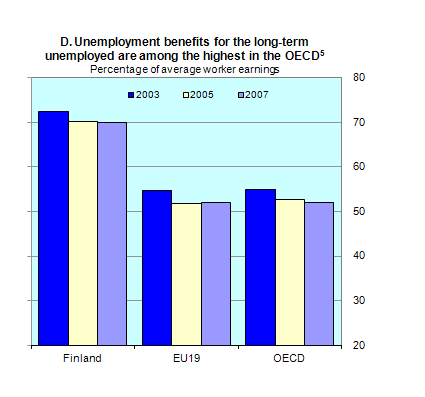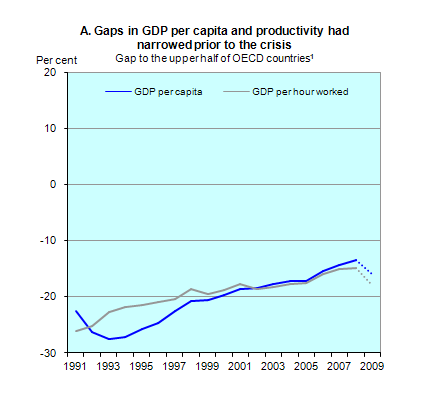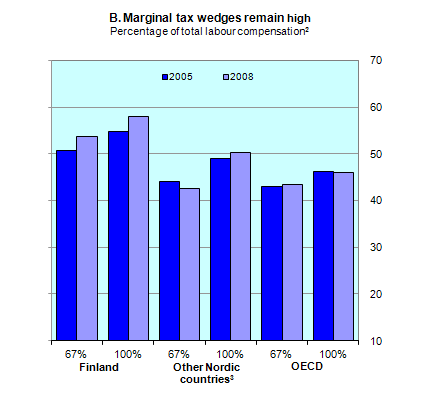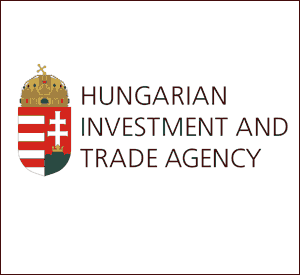Finland: Finland Finance Profile 2012
2012/03/12
Finland Finance Profile 2012
The economy experienced an extraordinary foreign-funded boom in recent years, with output rising by over 25 percent during 2003-2007. This rapid expansion, however, left a legacy of large macroeconomic imbalances, overstretched private sector balance sheets, and high dependence on foreign financing. The financial sector assets expanded to over 1,000 percent of GDP, while gross external indebtedness reached 550 percent of GDP at end-2007, largely on account of the banking sector.
The global turbulence has taken a significant toll on domestic financial markets since end-2007. The CDS spreads of the three largest domestic banks have risen sharply, approaching 1000 basis points and the freely-floating Icelandic króna has depreciated by over 40 percent. Despite minimum public sector debt, the sovereign is facing a significantly increased risk premium.
In response to the turmoil, the authorities have taken steps to shore up confidence. The Central Bank of Iceland (CBI) tightened the policy rate, enhanced liquidity provision to reduce pressures in foreign exchange and domestic markets, and improved its foreign exchange liquidity access by entering into currency swap agreements with other Nordic central banks. The government indicated its willingness to boost CBI's international reserves and pledged to pursue fiscal prudence and to reform the fiscal framework and the Housing Financing Fund (HFF).
At the same time, banks have sought to strengthen their balance sheets and enhance liquidity buffers. The three largest banks have slowed lending growth, consolidated funding needs, withdrawn from marginal markets, mobilized retail deposits abroad, and reduced costs, although their ability to de-leverage has been limited by global risk aversion.
With foreign financing constraints binding, the economy is cooling. Output growth slowed in the first half of 2008, pulled by a significant retrenchment in domestic expenditure. Consumer confidence plunged in the first half of 2008, retail sale turnover decelerated sharply, and domestic investment, especially in the construction sector, came to a halt.
The sharp depreciation of the Icelandic króna contributed to a jump in domestic prices. Annual inflation shot up from 5.9 percent at end-2007 to 14.5 percent in August 2008. With inflationary pressures mounting, the CBI raised its target interest rate by 1¾ percent in March-May 2008 and kept it unchanged at 15.5 percent since then. Inflation is expected to remain persistently above target in the near term, with significant risks on the upside.
The fiscal position is set to deteriorate and spending pressures to rise. The 2008 budget implies a loosening of the fiscal stance, and the government's commitment to cutting taxes further and boosting spending in early 2008 will contribute to an expansionary policy in 2009 and beyond. Given these policies, staff forecast the fiscal deficit to reach 5 percent of GDP in 2010.
Against this background, economic activity is projected to come to a standstill in 2008 and contract in 2009-10. Tighter lending conditions, significantly lower real estate prices, weaker private balance sheets, and declining purchasing power point to a sharp retrenchment in private consumption. Investment is also expected to decline in 2009-10 while net exports should remain supportive, on the back of strong aluminum exports and a contraction in imports. The risks to the outlook are on the downside, dominated by external considerations.




- Finland News
-
- AFGHANISTAN: Higher earning Why a university degree is worth more in some countries than others
- ALBANIA: Europe in 2016: Terror fears, migration, politics. But economy may turn a corner
- AFGHANISTAN: Global growth will be disappointing in 2016: IMF's Lagarde
- FINLAND: Standard & Poor's paints negative outlook for Finland
- FINLAND: Tsipras has not only agreed to all the terms he before called "blackmail",
- AFGHANISTAN: Revised IMF forecasts signal gloom on global economic outlook












